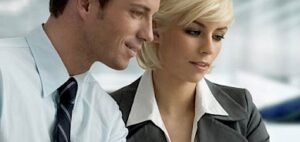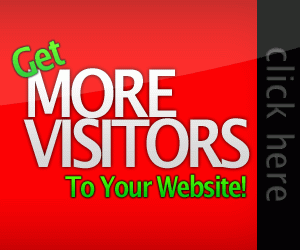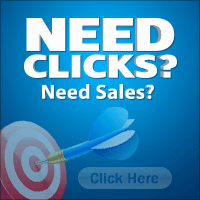COMPLEMENTARY AND ALTERNATIVE MEDICINE (CAM)
The National Center for Complementary and Alternative Medicine (NCCAM) defines CAM as a group of diverse medical and healthcare systems, practices, and products that are not presently considered part of conventional medicine.
Classifications of CAM Therapies
The NCCAM divides CAM into four major domains—Mind-Body Medicine, Manipulative and Body-Based Practices, Energy Medicine, and Biologically-Based Practices.
NIH/NCCAM has identified five domains or types of complementary therapies.
Mind-body therapies
Mind-body medicine honors the intrinsic connections between thoughts and physiological functioning. This approach to healing harnesses the power of thought and emotion to positively influence health and wellbeing. Mind-body therapies (MBTs) include meditation, guided imagery, relaxation, hypnosis, biofeedback, prayer, expressive therapies (dance, art and music) and breathwork. As the evidence for efficacy and effectiveness grows, many MBTs previously classified as CAM are now viewed as mainstream/conventional treatments. Examples include cognitive behavioral therapy and patient support groups.7
Biologically-based therapies
NIH/NCCAM defines biologically-based therapies as the use of “substances found in nature”. These CAM interventions are increasingly popular. Literature estimates that more than 95% of the US public has used biologically-based therapies at one point in their lifetime.3,8 This CAM domain includes, but is not limited to botanicals, animal-derived extracts, vitamins, minerals, fatty acids, amino acids, proteins, prebiotics and probiotics, whole diets and functional foods.
Manipulative and body-based methods
In 1998, body-based methods represented over 50% of visits made to CAM providers. Therapies include osteopathic manipulation, chiropractic, massage and reflexology. Any therapy that involves movement of one or more parts of the body and focuses on structures and systems of the body, including the bones and joints, the soft tissues, and the circulatory and lymphatic systems is classified within this domain.8
Energy Therapies
Energy therapies involve the use or manipulation of energy fields to promote health and healing. Two distinct classifications are described by NIH/NCCAM.
-
Biofield therapies: interventions that affect energy fields that surround and penetrate the human body by applying direct or indirect pressure on these fields. Examples includes qi gong, Reiki, Healing Touch® and Therapeutic Touch.
-
Bioelectromagnetic-based therapies: interventions that employ an unconventional use of electromagnetic fields for the purpose of healing. Therapies include the use of pulsed, magnetic and alternating-current or direct-current fields.8
Whole medical systems/Alternative medical systems
Whole systems of complementary and alternative medicine (WSCAM) are defined as “…complete systems of theory and practice that have evolved independently from or parallel to allopathic (conventional) medicine. Many are traditional systems of medicine that are practiced by individual cultures throughout the world.”8 Traditional Chinese Medicine (TCM, including acupuncture, Chinese herbs, tui na massage, tai chi, qi gong), Ayurvedic Medicine, classical homeopathy and indigenous healing systems, are among the major WSCAM that have received research attention to date. All of these systems share a perspective that inherited and/or acquired imbalances in the patient’s overall constitution, not disease localized in a specific organ isolated from the rest of the body, is at the root of the manifestations of disease or dysfunction. Their diagnostic and treatment programs are thus patient-centered rather than disease-centered.
Patients access therapies within these five domains in varying degrees and through various means, dependent on cultural, economic and social factors. Providers recommend the use of these strategies dependent on the reported evidence, personal and professional knowledge about the therapies, requests from patients and perceived safety. In the next issue, we will explore incidence/prevalence of use, reimbursement and delivery issues and patient/provider decision-making relative to use of these therapies.
Alternative therapies refer to any medical treatments that are not traditional medicine techniques. Alternative therapies could either be used alongside conventional medicine or instead of it. The term is often used interchangeably with “complementary medicine.” In medical spaces, the practice is referred to as Complementary and Alternative Medicine (CAM).
The National Institutes of Health (NIH) does make a distinction between complementary and alternative medicine. According to them, when it’s used alongside traditional medicine, it’s complementary, but if it’s used in place of conventional medicine, then it’s considered alternative. However, most people are likely to use these therapies alongside traditional medicine.
When a licensed healthcare provider uses both alternative therapies and conventional medicine, then it’s called integrative medicine. A doctor or healthcare provider who uses integrative medicine uses all therapeutic methods to ensure their patients are healthy.
There are several different terms used to describe complementary or alternative therapies. If you’re not familiar with them, it can be confusing. You may see therapies described as:
Unconventional therapies
This generally means treatments that aren’t normally used by doctors to treat cancer. In other words, any treatment that is not thought of as part of conventional medicine.
CAM (Complementary and Alternative Medicine)
CAM is a term which covers both complementary and alternative therapies.
Integrated healthcare or integrated medicine
These terms describe the use of conventional medicine and complementary therapies together. The terms are often used in the USA but are becoming more widely used in the UK.
In cancer care, integrated medicine usually includes having access to all the following:
- conventional medical treatments
- different types of complementary therapies. These include massage, reflexology, relaxation, herbal medicine and acupuncture
- counselling services and support groups
- up to date information about your cancer and its treatment
Traditional medicine
Health professionals may use this term to mean a therapy that has developed over centuries, usually within a particular culture. It’s usually formed around a particular belief system.
This term can be confusing. In the western part of the world, conventional medicine could be considered a traditional medicine. But this term is not usually used in this way. It generally refers to therapies or treatments that developed in the eastern part of the world. Such as:
- Ayurvedic medicine
- traditional Chinese Medicine
What are complementary therapies?
People with cancer may use complementary therapies alongside their medical treatments. They can help them to feel better and may improve quality of life. The cancer or side effects of cancer treatment can cause symptoms. Complementary therapies may help you to cope better with these symptoms.
A good complementary therapist won’t claim that the therapy will cure your cancer. They will always encourage you to discuss any therapies with your cancer doctor or GP.
There are many different types of complementary therapy, including:
- aromatherapy
- acupuncture
- herbal medicine
- massage therapy
- visualisation
- yoga
Many health professionals are supportive of people with cancer using complementary therapies. But some may be reluctant for their patients to use them. This is usually because many therapies have not been tested in the same way as conventional treatments.
There is some research looking into how well complementary therapies work for people with cancer. But we need more to find out how best to use them.
What are alternative therapies?
Alternative therapies are used instead of medical treatment. People with cancer have various reasons for wanting to try alternative therapies.
There is no scientific or medical evidence to show that alternative therapies can cure cancer. Some alternative therapies are unsafe and can cause harmful side effects. Or they may interact with your medical treatment. This could increase the risk of harmful side effects. Or may stop the conventional treatment working so well. Giving up your cancer treatment could reduce your chance of curing or controlling your cancer.
Some alternative therapies sound promising. But there is no good evidence to support the claims. They can give some people false hope.
Examples of alternative cancer therapies include:
- laetrile
- shark cartilage
- Gerson therapy
What are the different types of CAM?
Many different areas make up the practice of complementary and alternative medicine (CAM). In addition, many parts of one field may overlap with the parts of another field. For example, acupuncture is also used in conventional medicine. In the U.S., CAM is used by about 38% of adults and 12% of children. Examples of CAM include:
- Traditional alternative medicine. This field includes the more mainstream and accepted forms of therapy, such as acupuncture, homeopathy, and Oriental practices. These therapies have been practiced for centuries worldwide. Traditional alternative medicine may include:
- Acupuncture
- Ayurveda
- Homeopathy
- Naturopathy
- Chinese or Oriental medicine
- Body. Touch has been used in medicine since the early days of medical care. Healing by touch is based on the idea that illness or injury in one area of the body can affect all parts of the body. If, with manual manipulation, the other parts can be brought back to optimum health, the body can fully focus on healing at the site of injury or illness. Body techniques are often combined with those of the mind. Examples of body therapies include:
- Chiropractic and osteopathic medicine
- Massage
- Body movement therapies
- Tai chi
- Yoga
- Diet and herbs. Over the centuries, man has gone from a simple diet consisting of meats, fruits, vegetables, and grains, to a diet that often consists of foods rich in fats, oils, and complex carbohydrates. Nutritional excess and deficiency have become problems in today’s society, both leading to certain chronic diseases. Many dietary and herbal approaches attempt to balance the body’s nutritional well-being. Dietary and herbal approaches may include:
- Dietary supplements
- Herbal medicine
- Nutrition/diet
- External energy. Some people believe external energies from objects or other sources directly affect a person’s health. An example of external energy therapy is:
- Electromagnetic therapy
- Reiki
- Qigong
- Mind. Even standard or conventional medicine recognizes the power of the connection between mind and body. Studies have found that people heal better if they have good emotional and mental health. Therapies using the mind may include:
- Meditation
- Biofeedback
- Hypnosis
- Senses. Some people believe the senses, touch, sight, hearing, smell, and taste, can affect overall health. Examples of therapies incorporating the senses include:
- Art, dance, and music
- Visualization and guided imagery
Is alternative medicine the same as complementary medicine?
Many people use terms such as alternative medicine, integrative medicine, and complementary medicine interchangeably. However, each term describes something different:
- Alternative medicine: This describes medical systems or practices that act as a replacement for conventional medicine. An example of this would be a person using energy healing for a condition rather than mainstream treatments.
- Complementary medicine: This describes nonconventional medical approaches as a complementary or positive addition to conventional treatment. For example, a person who experiences migraine may take conventional pain medications but also attend biofeedback sessions.
- Integrative medicine: This describes an approach to medicine that combines conventional and less conventional methods in a coordinated, evidence-based way.
- Holistic medicine: This refers to treatment that considers a person’s health as a whole, rather than focusing on one organ or bodily system. Some types of alternative, complementary, and integrative medicine are also holistic.
Some people group “complementary and alternative medicine” together under the acronym CAM. There are many types of CAM. The National Institutes of Health (NIH) group them into five broad categories.
Mind-body therapies focus on the relationship between the mind and body to help treat or manage a condition. Some examples include:
Meditation
Meditation is an ancient practice that is prominent in religions such as Hinduism and Buddhism. Today, there are many forms of meditation people can try; some are religious in nature, and some not.
Many studies have verified that meditation has health benefits. It can lower blood pressure and stress levels. Research suggests it may also reduce the symptoms of:
- anxiety
- depression
- irritable bowel syndrome
- insomnia
- menopause
Biofeedback
Biofeedback involves the use of machines that measure unconscious or involuntary bodily processes, such as heart rate or muscle contractions. The device then converts the information into audio, visual, or tactile signals. A therapist then helps someone learn to control these signals.
Biofeedback can help people learn to relax painful muscles, alter their mental state, and more. Its most common uses include management of neuromuscular disorders, chronic pain, anxiety, and incontinence.
Hypnosis
Hypnosis involves someone going into a deep state of relaxation and focusing on suggestions a clinician makes while the person is in a hypnotic state. The aim is for the suggestions to help change a person’s mental state, resulting in health benefits.
According to the American Psychological Association (APA), most clinicians agree hypnosis has benefits for:
- anxiety
- pain
- mood disorders
- quitting smoking
Yoga
Similar to meditation, yoga is a mind-body exercise that originates in spiritual practices. It involves moving through sequences of poses and stretches while also focusing on breathing. Many people around the world practice yoga to promote mental and physical well-being.
Some research suggests yoga may help:
- lower stress
- improve sleep
- improve balance
- manage anxiety or depression
- reduce neck and lower back pain
- manage weight
- alleviate the symptoms of menopause
- reduce the symptoms of chronic conditions
Most studies on yoga’s benefits have been with small numbers of people, so more research is still needed.
Tai chi
Tai chi is a martial art that originated in China. It involves a series of postures or slow movements combined with controlled breathing. Some research suggests tai chi may help
- improve balance in older adults and people with Parkinson’s disease
- reduce pain associated with knee osteoarthritis
- reduce back pain
- improve quality of life for people with chronic illnesses such as fibromyalgia, cancer, or heart disease
Biologically based therapies use substances such as plants and foods to improve health or treat conditions. Some examples include:
Dietary supplements
Some CAM and integrative practitioners use nutritional supplements, such as vitamins, minerals, or other beneficial compounds, to treat or manage conditions.
Botanicals
This includes the use of plants or plant compounds for medical benefits. There are many examples of plants that people use to treat symptoms or conditions. Popular examples include:
- cannabis
- evening primrose oil
- curcumin, which comes from turmeric
- allicin, which comes from garlic
- valerian root
Special foods or diets
Dietary approaches to medicine involve using food itself to treat certain conditions. This may mean eating foods with specific medicinal properties, following diets that contain certain nutrients, or avoiding some foods altogether.
These therapies aim to help people by manipulating invisible energy fields. According to some medical systems and practices, the energy around the body can influence health. By addressing disturbances or blockages in energy, practitioners believe it is possible to treat certain conditions.
Some examples of biofield therapies include:
Therapeutic touch
This involves a practitioner running their hands over or gently touching someone’s body to control or restore their flow of energy.
Reiki
Reiki originally comes from Japan. During reiki treatments, practitioners try to control energy in the body by using their hands. This may involve placing them on someone, just above them, or even working at a distance from a person. The aim is to free blocked energy and improve the body’s natural healing abilities.
Body-based therapies involve a therapist physically moving one or more parts of a person’s body for therapeutic benefits. Common examples include:
Massage
During massage, a practitioner uses their fingers, hands, or tools to knead, rub, or press the body’s soft tissue. It is an ancient therapy, and people have practiced it in most cultures throughout history. There are many types of massage, each of which involves different techniques, rhythms, and areas of the body.
Reflexology
Reflexology involves pressing or manipulating pressure points in the hands or feet. The idea behind it is that a practitioner can target and help other parts of the body. It can also promote relaxation.
Chiropractic therapy
This therapy manipulates someone’s muscles, tissues, or bones to help the body heal from musculoskeletal conditions or help someone cope with a condition that may be causing pain.
Whole medicine systems refer to sets of beliefs and practices that work together. These systems have typically evolved over hundreds of years. Some of the most well-known methods include:
Traditional Chinese medicine (TCM)
TCM is a complex system based on a belief in two opposite forces: yin and yang. For the body and mind to be in good health, practitioners believe that yin and yang must be in balance. TCM practitioners use a combination of herbal, mind-body, and physical therapies to achieve this.
TCM is over 2,000 years old and is where practices such as acupuncture and tai chi have their origins.
Ayurvedic medicine
Ayurveda is a holistic health system that developed in India thousands of years ago. Ayurvedic practitioners believe that everyone is made up of five elements: air, fire, water, earth, and ether (or space). The way these elements combine dictates how the body works.
Homeopathic medicine
Homeopathy comes from Germany and is around 200 years old. It focuses on two theories: that “like cures like” and that the lower the dose is of something, the more effective it is.
There is little evidence that homeopathy works for any condition. Additionally, some substances homeopathy uses are toxic, such as white arsenic and deadly nightshade.
Naturopathic medicine
Naturopathy is a system that includes a mixture of traditional and alternative approaches to medicine. It focuses on using natural and noninvasive ingredients and techniques, such as herbs, exercise therapy, dietary changes, and massage, among many others
In some U.S. states, naturopathic doctors can also prescribe pharmaceutical medications, but this varies based on location.
Many people debate whether conventional medicine is better than alternative medicine. When comparing them, it is important to consider the following:
Scientific evidence
One of the main benefits of standard medical care is that it undergoes rigorous research. Through clinical trials and studies, scientists can determine whether certain techniques, medicines, and courses of treatment are effective and safe.
Many scientists use these methods to study alternative medicine, too. However, the data is not always as abundant or reliable. Some types of alternative medicine, such as homeopathy, have very little scientific evidence to support them.
There are exceptions to this. Some types of alternative therapy have been well-researched by scientists, so doctors can safely recommend them to patients. Examples of this include yoga and meditation, as well as acupuncture. The American College of Physicians recommends acupuncture as a first-line treatment for lower back pain.
Ingredients
Some people believe that alternative medicine is better than conventional medicine because it often focuses on natural substances, which some believe to be safer, gentler, or more suitable for the human body than manufactured medicines.
However, as with conventional medicines, natural medicines can also cause side effects, drug interactions, and poisoning at the wrong dosages. Some natural products can also contain harmful substances not listed on the label. For example, some Ayurvedic products contain naturally occurring toxins, such as mercury or lead.
Even when natural products are safe, it can be more difficult for companies to ensure they have consistent levels of potency and purity. Third-party testing can reduce this problem, but not all companies use it.
Accessibility
For some, conventional medicine is more difficult to access than the alternative treatments available within their communities. In comparison to the U.S. healthcare system, alternative medicine may be:
- more affordable
- more familiar, or easier to understand
- more consistent with a person’s views or culture
- closer to where a person lives
- easier to practice independently
These are important factors and can make alternative medicine more appealing. People who have had negative experiences of healthcare may also prefer to seek alternative options.
Why people use complementary or alternative therapies
There are a number of reasons why people use complementary or alternative therapies. A paper published in 2012 suggested that around half of people with cancer use some sort of complementary therapy, at some time during their illness.
There is no evidence to suggest that any type of complementary therapy prevents or cures cancer.
For some therapies there is very little research evidence to show that they help with certain symptoms. For example, pain or hot flushes. But there is research going on and we are starting to collect evidence for some types of therapy.
Using therapies to help you feel better
People often use complementary therapies to help them feel better. And cope with having cancer and treatment. How you feel plays a part in how you cope.
Many complementary therapies concentrate on relaxation and reducing stress. They might help to:
- calm your emotions
- relieve anxiety
- increase your general sense of health and well being
Many doctors, cancer nurses and researchers are interested in the idea that positive emotions can improve your health.
Reducing symptoms or side effects
There is growing evidence that certain complementary therapies can help to control some symptoms of cancer. And treatment side effects.
For example, acupuncture can help to relieve sickness caused by some chemotherapy drugs. Or, it can help relieve a sore mouth after having treatment for head and neck cancer.
Acupuncture can also help to relieve pain after surgery to remove lymph nodes in the neck.
Feeling more in control
Sometimes it might feel as though your doctor makes many of the decisions about your treatment. It can feel like you don’t have much control over what happens to you.
Many people say complementary therapy lets them take a more active role in their treatment and recovery. This is in partnership with their therapist.
Natural and healing therapies
Many patients like the idea that complementary therapies seem natural and non toxic.
Some complementary therapies can help with specific symptoms or side effects. But we don’t know much about how they might interact with conventional treatments like cancer drugs or radiotherapy.
Some types of complementary or alternative medicine might make conventional treatment work less well. And some might increase side effects.
Comfort from touch, talk and time
Some people might get a lot of comfort and satisfaction from the touch, talk and time that a complementary therapist usually offers.
A good therapist can play a supportive role during cancer treatment and recovery. For example, a skilled and caring aromatherapist can take the time to make you feel cared for. This might help improve your quality of life.
Staying positive
Having a positive outlook is an important part of coping with cancer for most people. It is normal to want and hope for a cure. Even if your doctor suggests that this might be difficult.
Some people use complementary therapies as a way to feel positive and hopeful for the future.
Boosting your immune system
There are claims that certain complementary therapies can boost their immune system and help fight cancer. There is evidence that feeling good and reducing stress boosts the immune system. But doctors don’t know if this can help the body to control cancer.
There are clinical trials looking at how certain complementary therapies might affect the immune system.












